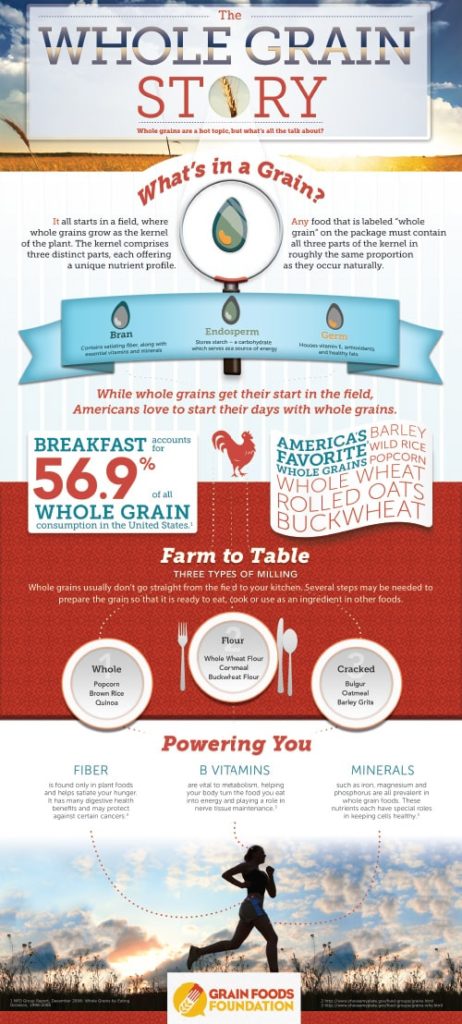Whole grains are a hot topic, but what’s all the talk about. So what’s in a grain? Well, it all starts in a field, where whole grains grow as the kernel of the plant. The kernel is made up of three distinct parts, each offering a unique nutrient profile. The bran contains satiating fiber along with essential vitamins and minerals. The endosperm stores starch – a carbohydrate that serves as a source of energy. The germ houses vitamin E, antioxidants and healthy fats. Any food that is labeled “whole grain” on the package must contain all three parts of the kernel in roughly the same proportion as they occur naturally.
Whole grains don’t normally go straight from the field to your kitchen. There are three types of milling. Whole includes popcorn, brown rice and quinoa. Flour includes whole wheat flour, cornmeal and buckwheat flour. Cracked milling results in bulgur, oatmeal and barley grits.
According to the NPD Group Report, breakfast accounts for over 56% of all whole grain consumption in the United States.
Choosemyplate.gov took a look at America’s favorite whole grains. They include: barley, wild rice, popcorn, whole wheat rolled oats and buckwheat.
Grains really power your body. The fiber found in grains helps satiate hunger, improve digestive health and may protect against certain cancers. B Vitamins from grains are vital to metabolism. And minerals including iron, magnesium and phosphorus are all prevalent in whole grain foods and keep cells healthy.
Download this Infographic

